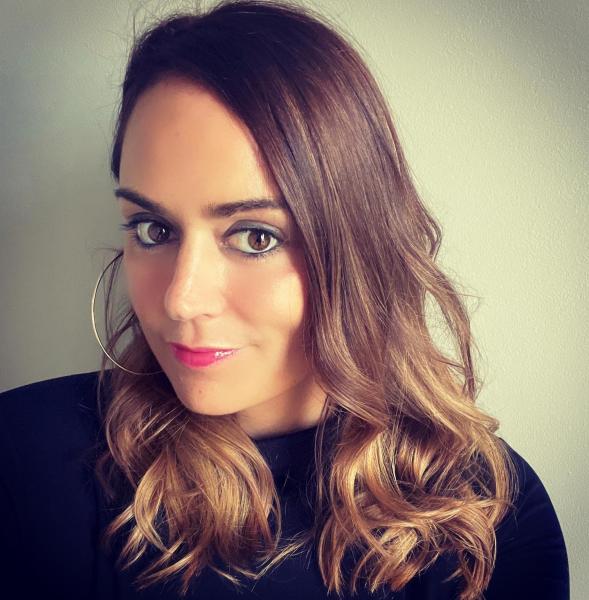
Written by Harriet Scott, MD and co-founder of GingerComms and its research arm Perspectus Global.
When I started executing survey-led news stories, around two decades ago, I was fresh out of university and had joined a brand new company , 72 Point, which had initiated an exciting new trend of using polls, commissioned by household name brands, to gather insights, facts and fun musings which we used to refer to as “info-tainment”.
We quickly started to realise that news desks welcomed this sort of light-hearted content, which was back then, a pretty simple formula of list based surveys, “top twenty coolest movie stars of all time” (Blockbuster circa 2000) or “the 50 most iconic hairstyles of all time” (Toni & Guy).
I didn’t know it at the time, but I would spend the next 15 years of my career there, working my way up the ranks, to the position of Group Managing Director. In that timeframe, I oversaw research campaigns for hundreds of the UK’s biggest brands and PR agencies, but eventually left to set up my own offering, focussing instead on what I like to call ‘artisan news gen’.
Let’s step back in time to the year 2000 and what news gen surveys looked like at the beginning.
For the fee of £750 (inflation has seen this same offering rise to between £6,000 and £15,000 depending on assets) we would run snapshot polls of 1,000 Brits on behalf of our clients.
We would upload the surveys and analyse the data, carving out news stories which we would sell to our news contacts. Inevitably, on a quiet news day, we would create page-lead, branded national print coverage. Just a name check would suffice. It was a simple branding exercise, only really suitable for big household name clients, the likes of Tesco, Somerfield, Blockbusters, Woolworths (all clients at the time).
They understood that being a part of a discussion point positioned their brand as an authority within their sector. A company quote, published alongside the story, was a bonus. Online was not important. Clients just wanted to see their name in the paper. Simple.
Cut to 2021 and this has become a multi-million pound industry, with a host of research agencies offering “PR surveys”, some more reputable than others. In my experience, you get what you pay for and “cheap and dirty” research prices usually lead to little or no consultancy, disappointed clients and more importantly, bad relationships with journalists.
As with anything that becomes mainstream, there is now a high volume of low quality survey content floating around on a daily basis which is largely ignored by journalists. Yet hundreds of surveys still land online and in print every month, so many PRs are still getting it right.
In fact, the pandemic has seen a return to media appetite for light and bright stories, to cut through all the gloom, and we find that these do best for ourselves and others right now.
As one of the UK’s leading providers of survey led news, at GingerComms and its research arm Perspectus Global, we know that research led PR is still a winning formula in terms of creating national exposure for brands.
For it to work well, here are my 5 basic principles…
Say something newsworthy. Now more than ever, during an unprecedented news agenda of global pandemics, wars, climate change, Love Island and with the world of social media offering journalists hundreds of celebrity stories a day, plus viral video content – brands need to be bolder with their research if they want to shout louder and cut through the noise. There is simply less space for survey-led content in the press, so the stories need to really shine.
Use a reputable research company which can show you examples of coverage achieved. Make sure they have a comprehensive understanding of what makes a story, what makes a narrative compelling, shareable and relatable. Make sure your chosen research agency knows how to ask the right questions and in the right format to garner the best results
Only use research for the right clients. Household names brands, consumer clients, sectors you can have some fun with. Our biggest hits are always for FMCG food brands, travel, movies, alcohol, sex, relationships, health, pets, cleaning products. B2B brands or unknown startups sometimes don’t get the traction in national news media as well-established brands. Think about what people want to talk about and, more importantly, subjects news and lifestyle contacts will want to cover - and how the brand can ‘own’ the topic, without it seeming too salesy.
Manage your clients expectations in terms of what is realistic for something which is not advertorial but editorial. Do not over promise and under deliver. This is still a cost effective equivalent to advertising, but it is not advertising. If you want an advert, pay for an advert.
Realise that print and online are now two separate entities. Five years ago, a story which landed in a national newspaper would automatically convert to the online version of that paper. If you want online coverage, words may not be enough. You will usually need additional assets – case studies, talent, pictures, spokespeople, experts (psychologists, mathematicians, astrologers), graphics, mini graphics. Make your research multi-layered to cut through to an online audience and find a research company that can offer it all under one umbrella
